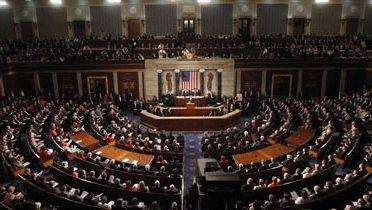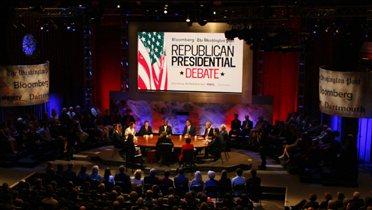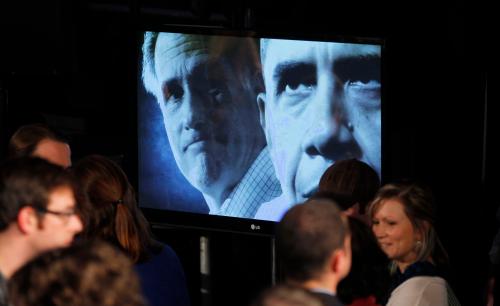The 2012 presidential election will go down in history as America’s most expensive campaign. With Obama and Romney each spending over $1 billion, there were record expenditures on campaign advertising plus contrasting uses of digital technology. Yet not all strategies worked equally well. Some approaches were more effective than others so it is important to learn the communications lessons for future races.
1) Early Advertising Frames the Narrative. Obama sought to replay Clinton’s 1996 strategy of winning the race early. He framed the race in the Summer as a choice between fairness versus tax cuts for the rich. Using attacks on Romney’s finance background at Bain Capital and failure to disclose tax returns, and GOP proposals to cut income taxes by 20 percent, Democrats characterized Romney as a rich and out-of-touch businessman who had little understanding of the economic plight of ordinary Americans. By the fall, many voters believed Romney would protect the rich while Obama would help the middle class.
2) Candidates Can Save Money by Buying Ads in Advance. Romney paid significantly more than Obama for his advertisements and therefore got less bang for the dollar. During October, according to Kantar/CMAG data, Obama ran 160,000 commercials costing $400 million versus 140,000 for Romney costing $500 million. The Republican strategy of waiting until late to place its commercials created great inefficiencies in ad expenditures. In some states such as Iowa, Ohio, and Wisconsin, Republicans outspent Democrats by three-to-two, but reached fewer people. And in places such as Florida, Obama’s ads reached 20 percent more viewers. Based on the Wesleyan Media Project, Obama spent $265 million on 503,255 ads in 63 markets with an average cost of $528 per spot. Romney devoted $105 million on 190,784 commercials in 78 markets at a cost of $552 per advertisement, or about 5 percent more on average.
3) Data Analytics Triumph Over Intuition. The candidates employed “A/B” web ad testing whereby they ran two versions of the same commercial online and tracked viewing, liking, and sharing to see which advertisement worked better. Through data analytics, they brought “experiment-informed programs” to the ad wars. Rather than guessing what works, they tracked actual behavior and saw how many webviews, likes, and sharing with friends took place.
4) Mobile Technology is King. Forty-four percent of Americans own smartphones and 83 percent of them are registered to vote, according to the Pew Research Center. People receive news through handheld devices and this gives people instant access to information at their fingertips. Both presidential candidates put great effort into configuring their websites for mobile use and communicating to mobile devices.
5) Social Media and Search Advertising Are Gaining in Importance. Obama spent about 10 percent of his advertising budget on digital outreach through Facebook, Google, and Bing, which was considerably higher than Romney. This allowed the campaign to engage in highly targeted outreach and reach people beyond the traditional electorate. This expanded the Democratic base and gave the President an advantage in certain states.
6 ) Twitter Allows People to Evaluate the Candidates and Democratize Political Commentary. During the party conventions, Twitter became a major part of the online conversation. Around 9.5 million tweets were sent during the week of the Democratic convention, compared to 7 million during the Republican gathering. President Obama’s acceptance speech generated the most traffic, with 52,756 tweets per minute, followed by Michelle Obama (28,000 tweets per minute), Bill Clinton (22,087 tweets per minute), Joe Biden (17,932 tweets per minute), Mitt Romney (14,289 tweets per minute), Marco Rubio (8,937 tweets per minute), Clint Eastwood (7,044 tweets per minute), and Paul Ryan (6,669 tweets per minute). Observers no longer have to wait for professional commentators to judge speech performance or debates. Social media allow ordinary folks to judge performance during the course of actual events.
7) Tweets Are the New Battleground. Obama advisor Axelrod sometimes engaged in Twitter wars with Romney’s strategists. For example, in January, Romney’s site tweeted “More Americans have lost their jobs under @BarackObama than any president in modern history.” Shortly thereafter, Axelrod responded with a tweet saying “@MittRomney A picture’s worth a thousand misleading words. This chart tells the story (with a link to a Bureau of Labor Statistics table showing 22 months of job growth).” Eric Fehrstrom, a senior Romney strategist responded “@davidaxelrod Sometimes you don’t need a picture to tell a story. The numbers speak for themselves – 1.7 million jobs lost under Obama”. Axelrod replied “@EricFehrn Dude, none of my business, but shouldn’t you be in debate prep instead of trying to explain yourself to me?”
8) Tweets Can Backfire. Sometimes, the rapidity of the Twitter wars got strategists in trouble. After former Commerce Secretary John Bryson had a series of car accidents in Los Angeles over the Summer, Crossroads co-founder Karl Rove tweeted “How does @CommerceSec have 3 car crashes in 5 minutes and alcohol NOT be involved? #Skills”. However, after doctors revealed that Bryson’s aberrant behavior had resulted from a brain seizure, Rove apologized for the incorrect inference and took down the snide comment.
9) In-House Communications Provide the Greatest Control. Obama’s organization built a large, in-house operation that was well-integrated into its overall strategy. It brought experts aboard who specialized in online outreach, social media mobilization, and data mining. The campaign also developed a website dashboard that allowed field organizers to enter data based on phone calls, home visits, and event attendance. Through Twitter and Facebook, it created a comprehensive data base with detailed voter profiles, which it could use to turnout people for events or from whom they could raise money. In contrast, the Romney organization did not have a lot of time to build its own digital campaign. After a bruising primary campaign that went well through the Spring, the GOP nominee out-sourced its data management and social media outreach activities using outside vendors. This is an expensive approach to communications and provides limited control over messaging.
10) Early Voting Means You Can’t Save All the Dirt for End of the Campaign. An estimated 35 percent of Americans cast their ballots before election day. This means candidates no longer can save their best or dirtiest appeals for the closing week of the campaign. Politicians need to understand that people are deciding their votes well in advance and they must communicate clearly and effectively throughout the campaign.






Commentary
Communications Lessons from the 2012 Presidential Election
November 6, 2012